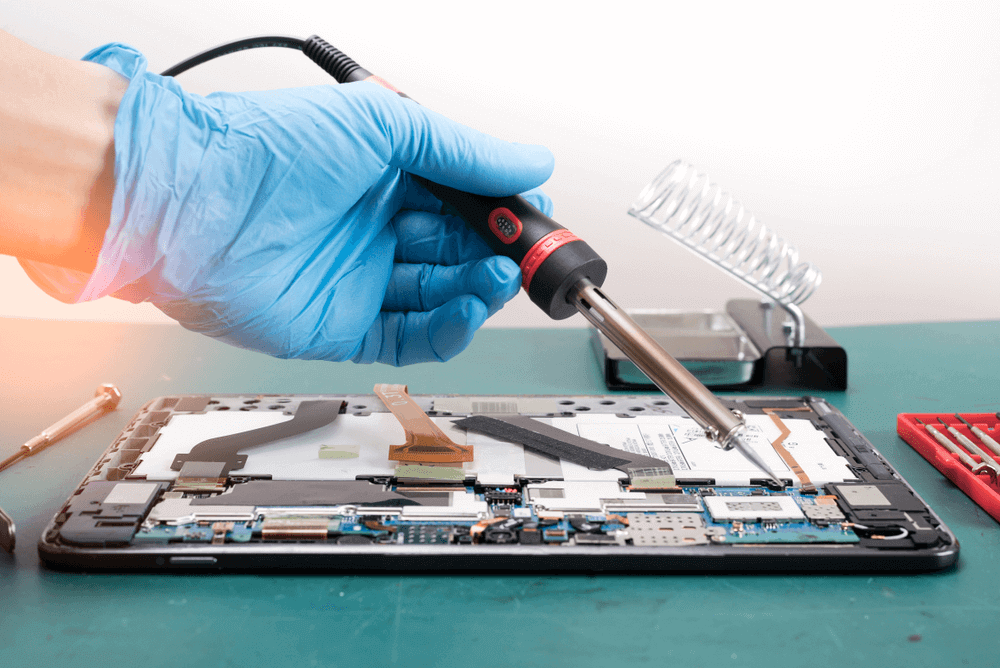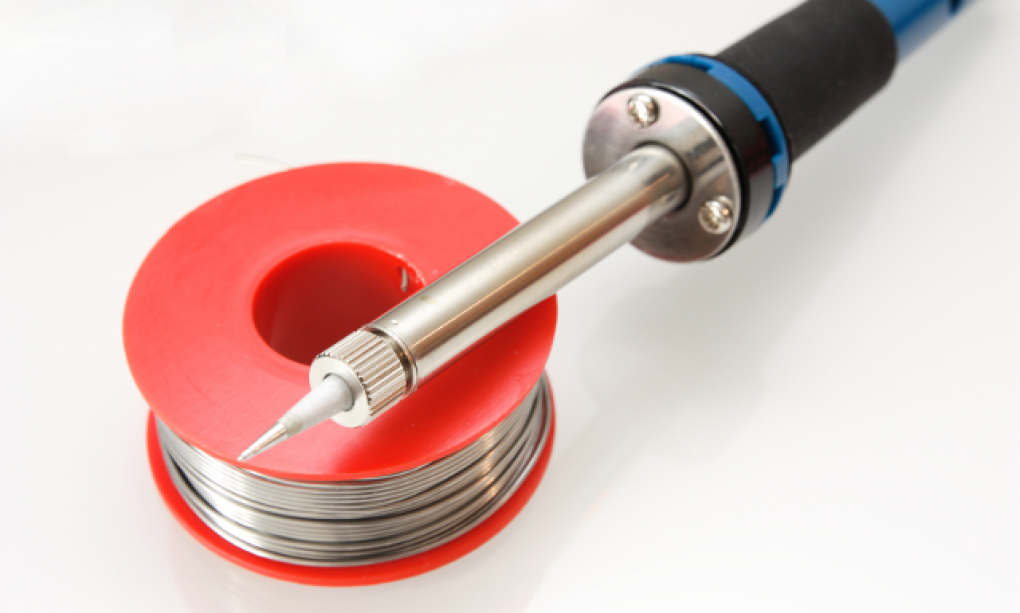The Importance of Right Lead Free Solder Temperature
The soldering process can fizzle out if you fail to optimize the lead free solder temperature. Temperature is the most critical factor of the soldering process. It can influence the lead time and outcome of the process.
However, there is no fixed ‘right temperature’ for the soldering process. The type of solder used, and its composition among other factors determine the perfect temperature for soldering.
We have dedicated this article to uncover the right lead-free solder temperature. We will begin with introducing soldering and lead free solders, so that we don’t leave novices out of the loop. Then we will highlight the importance of the right temperature. After which, we will discuss the right temperature for your preferred type of solders.

What is Soldering?
Temperature is critical to the soldering process and the soldering process is important in the electronics industry. The electronics industry employs different types of soldering processes for the manufacture of various components including circuit boards like PCBs.
Soldering is an electro-mechanical process that uses heat to melt a solder wire or paste to join metal pieces together.
There are different types of soldering processes. These include reflow soldering, wave soldering, and manual soldering. Reflow soldering includes a soldering paste that melts in the oven. Wave soldering uses waves of the molten solder to sold metal components on the circuit boards. While conventional soldering uses a soldering iron to melt solder wires that solidifies to join the two adjacent metals.
Of course, these explanations are oversimplified. But explaining each of them requires an article of their own.
Focusing on the topic at hand, soldering process is widely used in the commercial and industrial sectors. Including plumbing, jewelry crafting, and of course, electronics.
Moreover, courtesy of the simplicity and humble requirements of soldering, many passionate solderers perform soldering at home.
As far as the history of the soldering process is concerned, the origins of this process date back to 2000 and 3000 BC. But of course, people then weren’t using soldering irons. The soldering process gained popularity in the 19th and 20th centuries with the boom in the electronics and radio industry. Which led to the development of technologically adept soldering tools.
Lead Free Solder: An Introduction
A solder is a metal alloy that melts and forms a bond between two adjoining metals. It provides a mechanical bond between the two materials. And being a conductor, it permits the flow of current between the adjacent metals, which is imperative in all electronic equipment.
All solders are low-melting metal alloys, so a typical solder is very easy to use. These typical solders are composed of 60% tin and 40% lead. But because lead is a toxic element, therefore, many countries have restricted the use of lead in consumer electronics.
But if not lead solders, what do they use? Enter: lead free solders. Lead free solders are an innovation in the soldering industry that was led by the demand for minimizing human and environmental exposure to lead.
The most common lead-free solders contain 99.3% tin and 0.7% copper. But there are other lead free solders well that contain traces of silver as well. These solders are slightly expensive than Sn-Cu solders.
These solders melt at a slightly higher temperature than common lead solders. The melting temperature of lead-free solders make it a little less desirable for hobbyists because it is difficult to handle.
However, due to EU WEEE restrictions and RoHS for lead-containing goods, commercial manufacturers find great benefits in using lead free solders because it allows them to supply their products in Europe and other continents.
Importance of Lead Free Solder Temperature
Many factors influence a soldering process, including the type of solder, type of soldering iron, and the material being soldered. But temperature is the most crucial factor because it is the single parameter that influences the process in terms of altering its lead times and shapes its outcomes.
High Lead Free Solder Temperature- Overheating
Lead free solder temperature can either make or break the soldering project. Lead free solders melt at a higher temperature, so most solderers tend to use a very hot soldering iron that overheats the solder.
However, overheating solder, or heating it to a temperature well beyond its melting temperature may result in several defects. These defects include localize accumulation of heat around the solder joint and increased oxidation. Overheating contributes to increased oxidation. Because oxygen from the air can react with tin at elevated temperatures and contaminate the board or component.
Moreover, electrical components are sensitive, therefore overheating can also cause board damage. Furthermore, raising lead free solder temperature well above its melting point can reduce the quality of the solder joint formed. It may also lead to the erosion of the tip of soldering iron.
Additionally, overheating solder may burn the flux of the solder which may lead to the formation of smoke
Low Lead Free Solder Temperature- Delayed Heating
The lead free solder temperature at which it melts is significantly higher than lead solders. Therefore it is common for inexperienced solders to come across underheated solder. When a solder does not heat up to the right temperature within the right time frame, many solders make the mistake of prolonging the heating process.
However, increasing soldering time also increases the risk of oxidation. Because the metal is exposed to heat in the presence of oxygen for a longer period. Low lead free solder temperature also increases the lead time of the process. Thus contributing to poor heat transfer and leading to poor solder joints.
Moreover, a common soldering iron that is made to tackle will heat up slowly to the right lead free solder temperature. And the longer the iron takes to heat to the right temperature, the heat may spread to the neighboring components and damage the circuit board.
The Right Lead Free Solder Temperature
Now that you have understood the importance of lead free solder temperature, its time we explain what the right temperature would be.
As we have mentioned above, lead free solder temperature, at which it melts, is substantially higher than traditional Sn-Pb solder temperature.
While the traditional tin-lead solders melt around 180-190 °C, the lead free solders melt between the range of 217-227 °C, depending upon the composition of the solder. The difference between these soldering temperatures must be accounted for by the soldering iron you use.
Therefore, selecting the right soldering iron also influences the lead free solder temperature.
The Right Soldering Iron for the Right Lead Free Solder Temperature
Now, since we have highlighted the importance of the performance of soldering iron, we don’t want to leave you wondering about how you should select one. So, here are a few tips to help you select a soldering iron for the right lead free solder temperature.
- For the hobbyists here, you might want to choose a simple iron that is powered by 25-watt or more.
- For the more professional ones out of the lot, try going for the ones that have interchangeable tips. Interchangeable tips come in handy for slow melting solders as replacing a thin tip with a thicker one can melt the solder quickly.
- The best irons, for sophisticated projects, would be the one powered with 50-watt or more. These irons often come with interchangeable tips we mentioned above and have a feedback control to keep the temperature at the selected set point.
Conclusion
Optimizing the lead free solder temperature is critical because a too-high or too-low temperature can reduce the quality of the solder joint, increase oxidation, damage the circuit board while also damaging the circuit board.
Therefore, to ensure that the soldering process yields optimal results, you must maintain the lead free solder temperature between 217-227 °C. And for that, the soldering iron must be heated well above this temperature. Because if the soldering iron is not at a high enough temperature, it will fail to heat (and melt) the solder.
Soldering is a pretty straightforward process. All you need is the right equipment and information about the correct soldering temperature and you can easily and successfully tackle a soldering project.
For More Information, Contact Us today!





